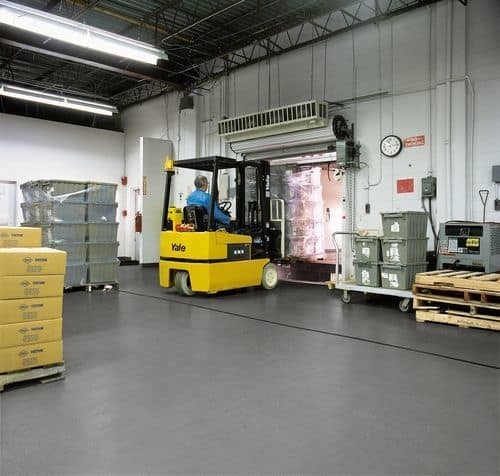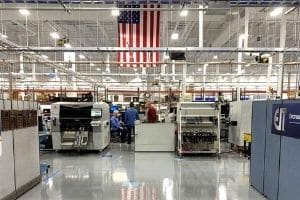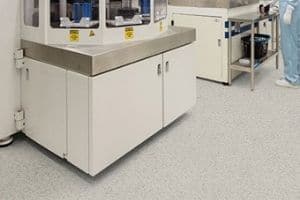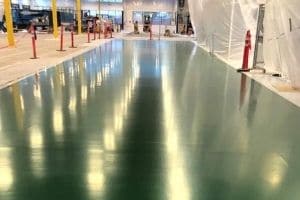Glossary: Resilient Flooring

There are several static-control options within the resilient flooring category, at a range of price points. The most common types of resilient flooring are made with vinyl, rubber, and recycled rubber. These materials are all known for being extremely durable while providing some level of cushioning (as compared to hard concrete). Rubber is especially good for this, providing an exceptional ergonomic walking surface.
Another common trait of resilient flooring is resistance to stains, including chemicals, dirt, and liquids. Resilient flooring also resists penetration by water, making it less likely than textile-based materials to become a breeding ground for mold and mildew.
Resilient flooring withstands heavy foot traffic. The materials used to make resilient flooring resist scuffing and damage from rolling furniture, dollies, or pallet jacks that are dragged across the floor. Rubber flooring is also slip resistant, making it an ideal solution for wet applications in manufacturing facilities.
Learning Center Articles
- ESD Basics
- Installation & Maintenance
- Selecting & Specifying an ESD Floor
- Technical Information
- 7 Common Mistakes Selecting an ESD floor
- A Guide to ESD Flooring Selection
- Avoid Costly Failures: What You Need to Know When Specifying ESD Flooring
- Choosing ESD Flooring for:
- ESD Footwear: What Is It and When Is It Necessary?
- ESD Footwear for Electronics Manufacturing and Handling Applications
- Facility Managers’ Guide to Selecting ESD Flooring
- The Need for Due Diligence in Specifying Static-Free Flooring
- Standard of Care for Specifying Floors in Mission-Critical Spaces
- Understanding the Hidden Costs of ESD Flooring

StaticWorx high-performance static-control floors protect electronic components, explosives, and high-speed computers from damage caused by static electricity. ESD flooring is part of a system. Choices should always be based on objective, researched evidence. When you partner with us, we look at all possible items that may need to integrate with the floor, and, focusing on your goals and objectives, help you find the right floor for your application.








